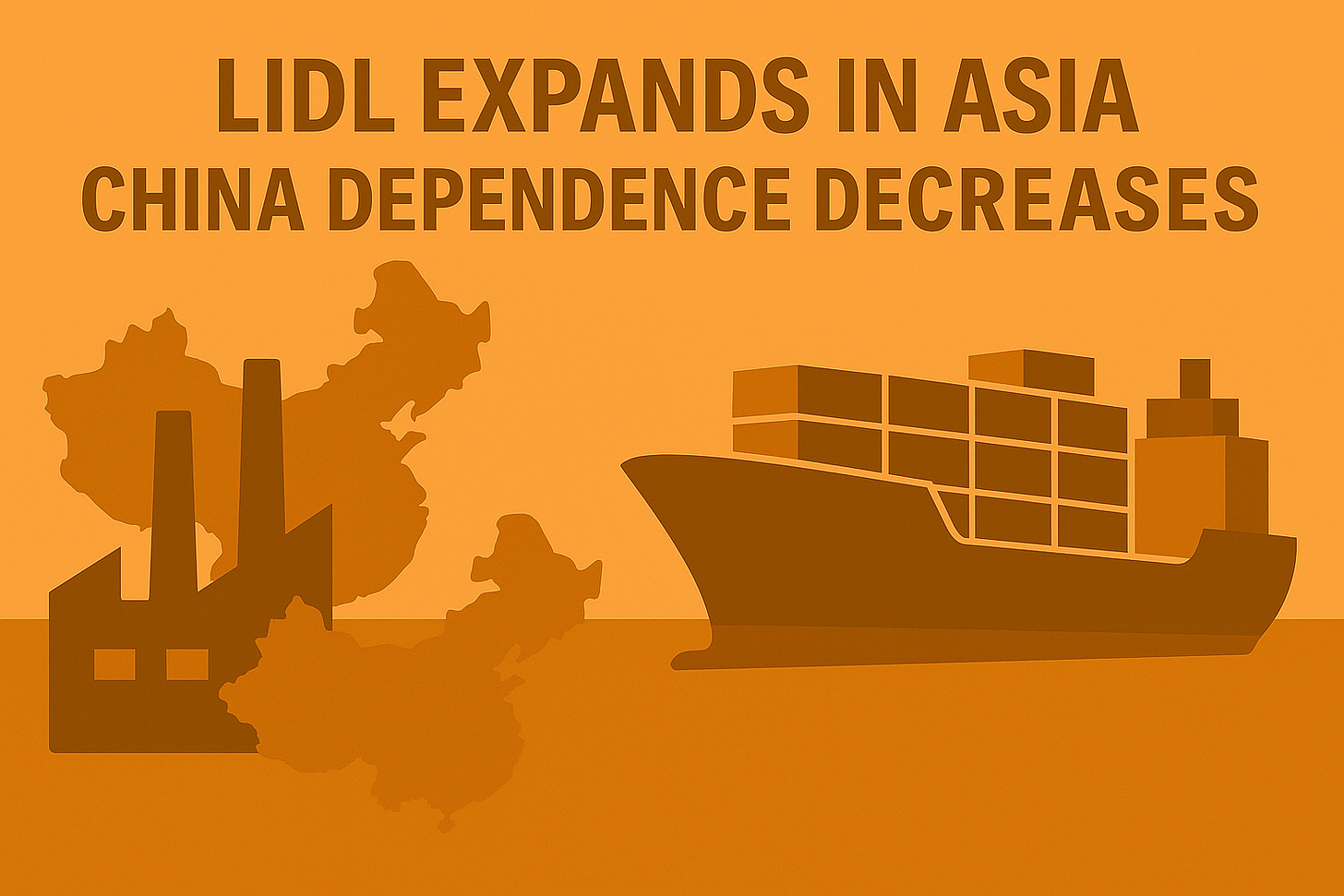Lidl expands its Asian network: Dependence on China decreases
Lidl is expanding its Asian network with new routes to Vietnam and Malaysia. The discounter is strengthening its supply chains - and specifically reducing its dependence on China.
Lidl is expanding its sourcing activities in South East Asia. New shipping routes of the Schwarz Group, to which the discounter belongs, indicate this. Lidl is adding routes from Ho Chi Minh City in Vietnam and Port Klang in Malaysia to its existing liner services. The discounter is thus reducing its dependence on China and diversifying its supply chains. However, some of the goods from these countries still come indirectly from China.
Generated by AI (DALE-E3)
Lidl relies on its own ships for Asia
In addition to more than 12,000 stores in 31 countries worldwide, the Neckarsulm-based company also operates its own shipping company, Tailwind Shipping Lines. Little known: Tailwind is Germany's second-largest shipping company with nine container ships. In June, the shipping company ordered five more ships with a capacity of up to 8,400 TEU, which will serve the new routes to Ho Chi Minh City and Port Klang from 2027 and 2028. This investment demonstrates Lidl's focus on long-term partnerships with Southeast Asian suppliers.
A key driver of Lidl's strategy is to reduce its dependence on China. Rising production costs, partly due to higher wages and stricter environmental regulations in China, as well as geopolitical uncertainties are forcing the discounter to tap into new procurement sources. Vietnam and Malaysia offer more cost-effective alternatives, supported by new shipping routes to Ho Chi Minh City and Port Klang. Port Klang has established itself as a central transshipment point and is overtaking Colombo as a hub for Asian shipments. Customs duties play a subordinate role in Europe, Lidl's main market. In the USA, where Lidl operates over 170 stores, lower customs duties of 20 percent for Vietnam and 24 percent for Malaysia, compared to 30 percent for China, ensure expansion.
Southeast Asia remains closely intertwined with China
However, the diversification of supply chains is only partially taking place. A significant proportion of goods from Vietnam and Malaysia originate directly or indirectly from China. In addition to simple transshipping, where goods are relabeled in Vietnam and 40% customs duties are incurred on imports to the USA, many producers import primary products from China to Vietnam and Malaysia. In addition, numerous Chinese companies have relocated their entire production to these Southeast Asian countries. Instead of buying from Chinese manufacturers in China, Lidl now sources goods from Chinese producers in Vietnam or Malaysia. This practice shows how deeply China remains integrated into global supply chains. Vietnam benefits from lower labor costs and a growing textile and electronics industry, while Malaysia scores with its strong logistics infrastructure, particularly through Port Klang. Nevertheless, countries such as Vietnam and South Korea are introducing stricter controls to prevent false proof of origin. The USA is also pushing for stricter rules to curb the circumvention of customs duties. For Lidl, this means that its dependence on China will only decrease to a limited extent despite new procurement sources, as its supply chains are still closely linked to Chinese players.
For Lidl, the changeover remains a pragmatic step. Lower production costs in Vietnam and Malaysia as well as new shipping routes reduce costs and make supply chains more resilient. At the same time, the practice of the connector countries shows that China continues to play a central role in global trade.





